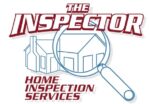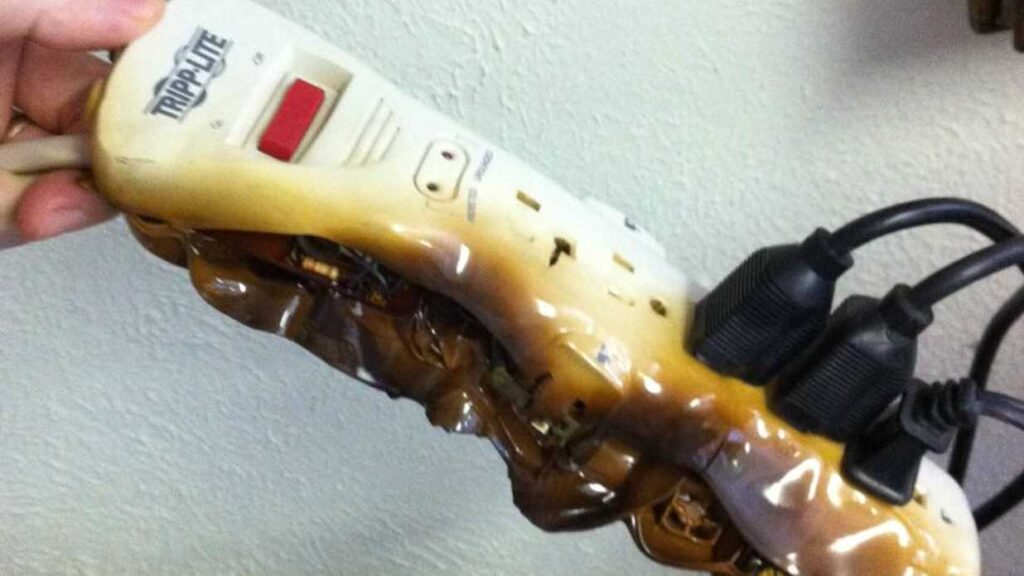The Fire Department issued this warning:
“The weather is getting colder, and people are pulling out their space heaters. We just wanted to remind you that you should NEVER plug a heater into a power strip. “These units are not designed to handle the high current flow needed for a space heater and can overheat or even catch fire due to the added energy flow. Please share and stay safe this Winter season.”
The US Goverment Consumer Product Safety Commission states: Small space heating equipment is the second leading cause of home fires in the U.S. with more than 65,000 fires being attributed to them each year. The ESFI reports the fire result in hundreds of deaths, thousands of injuries and millions of dollars in property damage.
Choose the right extension cord for the job, and use it as specified. Extension cords can overheat and cause fires when used improperly. Overheating is usually caused by overloading or connecting appliances that consume more watts than the cord can handle. Damaged extension cords can also cause fires. Extension cords should only be used temporarily. Protect young children by keeping them away from extension cords and unplugging the cords when not in use.
Overheating or Damage
- Overheating can occur at the plug, at the socket, or over the entire length of the cord. Hot plugs and sockets are often caused by deteriorated connections to the cord’s wires.
- Look for visible signs of excessive wear or damage to the plug, sockets or insulation. Replace damaged extension cords.
Prevent Overloading
- If any part of the extension cord is hot while in use, it is a warning sign that it may be overloaded. Check if the extension cord is properly rated for the products that are plugged into it. Also, inspect the cord along its entire length to ensure it has not been damaged.
- Do not overload your extension cord by using it to power appliances beyond its capacity.
- You can check its capacity, or rating, by looking at the tag on the cord or its packaging.
Protect Extension Cords from Damage
- Do not run extension cords under carpets, through doorways or under furniture.
- Only use an extension cord outdoors if it is marked for outdoor use.
- Never alter a cord to change its length or perform inadequate repairs such as taping up damaged insulation. Do not trim, cut or alter the plug blades in any way.
- Unplug an extension cord when it is not in use. The cord is energized when it is plugged in and can overheat if shorted.
Discard Older Extension Cords
- Discard cords that are old and/or are missing important safety features, including safety closures, polarized blades and a large plug face that covers the outlet’s slots and is easy to grasp to unplug.
- Extension cords should be at least 16 AWG, unless they are 18 AWG with fuse protection. AWG refers to the size of the wires in the cord. The wire size is imprinted on the cord’s surface.
- Check cords to make sure they have been listed by a recognized national testing laboratory, such as Underwriters Laboratories (UL), Intertek (ETL) or CSA-International (CSA).
Notice: The office of Mark Harman & Spencer Harman – THE INSPECTOR- IS STILL OPEN FOR BUSINESS… over 22 years Inspecting and going strong!
If you have questions or need further suggestions please give our office a call.
Mark Harman & Spencer Harman
Your California Home Inspectors
Central CA: 209-324-3180 / PO Box 759 Hughson, CA 95326
Bay Area: 925-699-2868 / 4125 S Hopyard Rd #225 Pleasanton, CA 94588
Resource: U.S. CONSUMER PRODUCT SAFETY COMMISSION • (800) 638-2772 • www.cpsc.gov • www.SaferProducts.gov Publication 5032 009810 042012 Household Extension Cords Can Cause Fires Photo courtesy of Umatilla County Fire District No.1 & Fox New Detroit
Download as PDF or JPG to share with your clients

